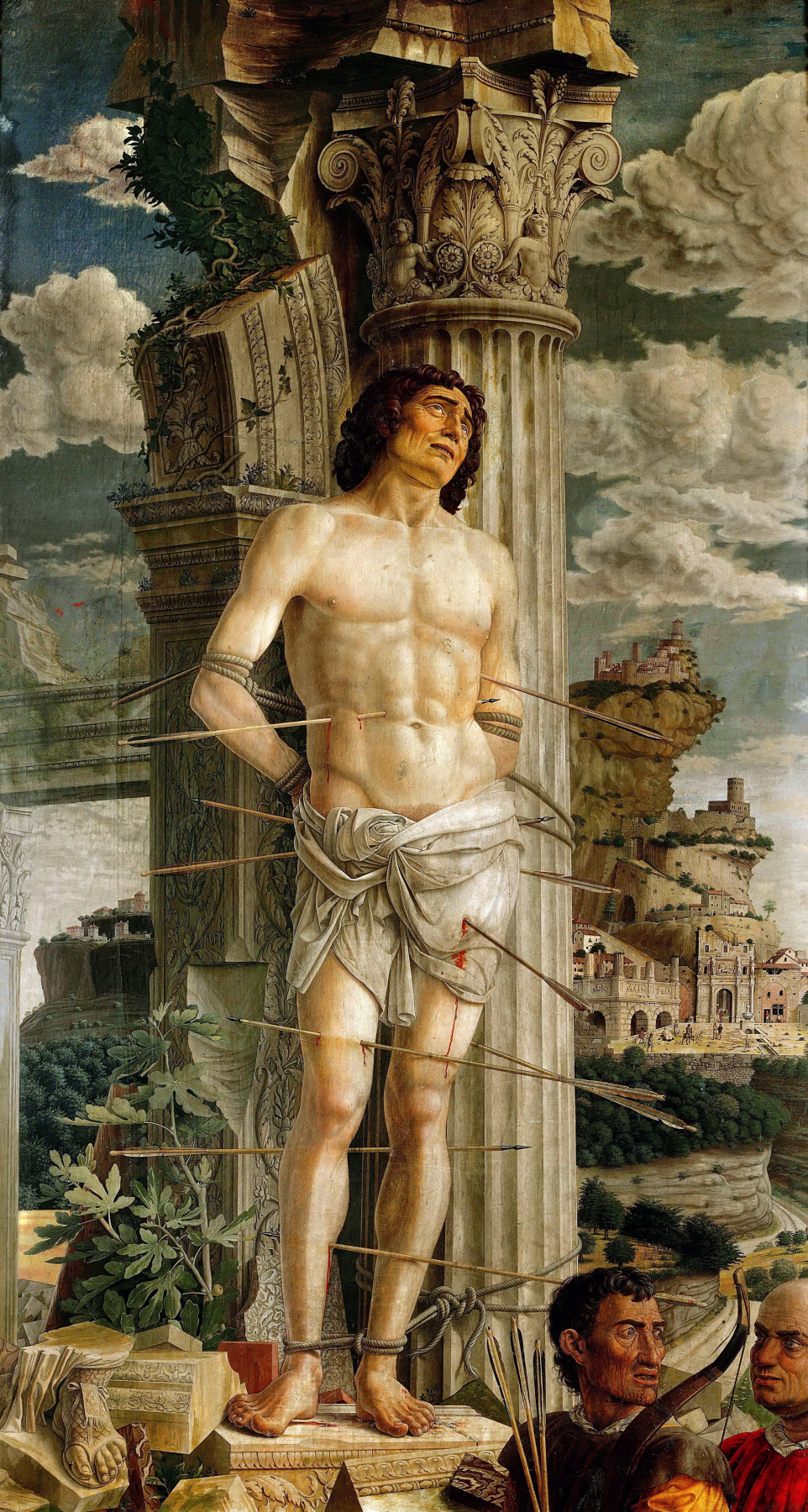log in
Enter site
Login to use Arthive functionality to the maximum
Saint Sebastian
Andrea Mantegna • Painting, 1480, 255×140 cm
Description of the artwork «Saint Sebastian»
Among the magnificent paintings on a spiritual theme, Andrea Mantegna has a series of three paintings created at different times under the same name - “Saint Sebastian”. The most famous of them is the second work of 1480, now stored in the Louvre.
Sebastian is now a canonized saint, and earlier - in the period of III-IV centuries - a soldier of the legion and a follower of Christian doctrine. The reigning emperor Diocletian was against Jesus and his followers, severely persecuted them. Upon learning that a preacher of a new faith had appeared among his legionaries, he ordered his associates to shoot the apostate with arrows to death.
As history reports, the Christian survived; his wife or another supporter of Christ came out. The man continued the work of preaching, which led to re-execution. This time he was stoned to death and thrown into the city’s gutter. At the direction of the angel, the body was found by Christian Lukina, who buried him in the catacombs.
The image of the martyrdom of Sebastian is a fairly common religious plot among painters. But everyone sees and shows the audience different facets of a person’s spiritual feat and its significance for history. Mantegna writes in 1480 the saint as a courageous person.
The entire lower body is cut with arrows by archers. Feet tied to a crumbling antique statue. This is a symbolic symbol - the fall of Greco-Roman idols, the departure of paganism into oblivion. Near the "statue" of the martyr, the remains of a completely destroyed marble hero are visible. The slain is strong, his eyes with faith are directed to the sky, his face is streaked with wrinkles as evidence of wisdom and knowledge.
Mantegna paid much attention to details in the image of the body, architecture, background. The amazing detail of the description recedes only before the brilliantly embodied idea of the formation of Christianity through the shedding of the blood of martyrs.
Sebastian is now a canonized saint, and earlier - in the period of III-IV centuries - a soldier of the legion and a follower of Christian doctrine. The reigning emperor Diocletian was against Jesus and his followers, severely persecuted them. Upon learning that a preacher of a new faith had appeared among his legionaries, he ordered his associates to shoot the apostate with arrows to death.
As history reports, the Christian survived; his wife or another supporter of Christ came out. The man continued the work of preaching, which led to re-execution. This time he was stoned to death and thrown into the city’s gutter. At the direction of the angel, the body was found by Christian Lukina, who buried him in the catacombs.
The image of the martyrdom of Sebastian is a fairly common religious plot among painters. But everyone sees and shows the audience different facets of a person’s spiritual feat and its significance for history. Mantegna writes in 1480 the saint as a courageous person.
The entire lower body is cut with arrows by archers. Feet tied to a crumbling antique statue. This is a symbolic symbol - the fall of Greco-Roman idols, the departure of paganism into oblivion. Near the "statue" of the martyr, the remains of a completely destroyed marble hero are visible. The slain is strong, his eyes with faith are directed to the sky, his face is streaked with wrinkles as evidence of wisdom and knowledge.
Mantegna paid much attention to details in the image of the body, architecture, background. The amazing detail of the description recedes only before the brilliantly embodied idea of the formation of Christianity through the shedding of the blood of martyrs.


